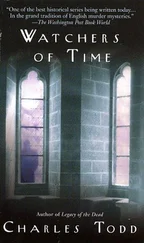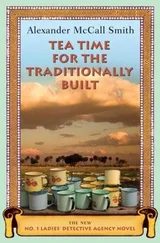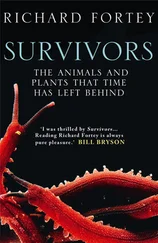Alexander Todd - A Time to Remember
Здесь есть возможность читать онлайн «Alexander Todd - A Time to Remember» весь текст электронной книги совершенно бесплатно (целиком полную версию без сокращений). В некоторых случаях можно слушать аудио, скачать через торрент в формате fb2 и присутствует краткое содержание. Город: Cambridge, Год выпуска: 1983, ISBN: 1983, Издательство: Cambridge University Press, Жанр: Химия, Биографии и Мемуары, на английском языке. Описание произведения, (предисловие) а так же отзывы посетителей доступны на портале библиотеки ЛибКат.
- Название:A Time to Remember
- Автор:
- Издательство:Cambridge University Press
- Жанр:
- Год:1983
- Город:Cambridge
- ISBN:0 521 25593 7
- Рейтинг книги:3 / 5. Голосов: 1
-
Избранное:Добавить в избранное
- Отзывы:
-
Ваша оценка:
- 60
- 1
- 2
- 3
- 4
- 5
A Time to Remember: краткое содержание, описание и аннотация
Предлагаем к чтению аннотацию, описание, краткое содержание или предисловие (зависит от того, что написал сам автор книги «A Time to Remember»). Если вы не нашли необходимую информацию о книге — напишите в комментариях, мы постараемся отыскать её.
A Time to Remember — читать онлайн бесплатно полную книгу (весь текст) целиком
Ниже представлен текст книги, разбитый по страницам. Система сохранения места последней прочитанной страницы, позволяет с удобством читать онлайн бесплатно книгу «A Time to Remember», без необходимости каждый раз заново искать на чём Вы остановились. Поставьте закладку, и сможете в любой момент перейти на страницу, на которой закончили чтение.
Интервал:
Закладка:
The award of a Nobel Prize brings to the recipient a great many things which can, for a time at least, grievously interfere with his research. He is suddenly in great demand as a lecturer in every corner of the globe, is showered with honorary degrees and deluged by requests from autograph-hunters. He suddenly finds that he has become a kind of oracle, who should be listened to with bated breath on every subject under the sun. In particular, he will receive a stream of requests to append his signature to public declarations or letters of protest about humanitarian or, very frequently, political problems. It is curious how some people seem to feel that winning a Nobel Prize in, say, chemistry suddenly makes their opinion on wholly non-scientific questions more significant than those of other people within whose province they really lie. But when all is said and done, it is a wonderful thing to receive the accolade from one's fellow-scientists, and perhaps prizewinners display no more than the normal failings of their fellow-men. The building of the new laboratories, which I had been promised on coming to Cambridge, took a long time, partly through vacillation by the university about the site, and more especially because of governmental restrictions. The latter were, of course, not unreasonable, as so much war damage had to be repaired, but the former was rather tiresome. In the end, however, J. T. Saunders (Secretary General at the time of my arrival) and I had our way, and it was agreed that we should build on the site of Lensfield House, an old mansion with a large garden on the south side of Lensfield Road. Saunders and I favoured this site, not just because it was big enough to accommodate what was to be the largest chemical laboratory in Britain, but because, abutting it on the south and stretching as far as the University Botanic Garden was a rather decayed residential area known as New Town, which was ripe for demolition and rebuilding. It was clear to us that expansion of the physical sciences and engineering in Cambridge was bound to happen, and that New Town provided an ideal building site which would keep all the sciences together on the right bank of the Cam, near the colleges, with the humanities continuing to develop on the left bank. Policies of universities change with changing administrative officials, however, and despite protestations by myself and others, this development scheme was not followed, and, some ten years or so after chemistry had been completed, the decision (in my opinion a wrong one) was taken to build physics anew on a remote site in west Cambridge; piecemeal development of this type is, in my view, undesirable and could prove very damaging to science in Cambridge.
As architects for the new chemical laboratories we chose the firm of Easton and Robertson. Murray Easton and his junior partner, Teddy Cusdin, had done a lot of hospital building, and were keen to build a really modern laboratory. At this time the University Grants Committee, realising that there would be a lot of building to be done in the late fifties and sixties, was keen to see some more or less standard type of construction devised for scientific laboratories, and its chairman, Sir Keith Murray, gave me a free hand to experiment. Easton and Cusdin, aided considerably by Ralph Gilson whose knowledge of the operation of laboratories was unequalled, rose to the occasion. We built on a steel space frame so that, on each floor of the building we needed no supporting walls, and services were arranged so that complete flexibility as regards laboratory or other uses could be achieved by using easily demountable partitions and building on an eight-foot module system. We began in 1950, but progress was painfully slow because of steel rationing; we used to get small deliveries at rather long intervals, and so could only do actual building work for short periods at a time. This, as it turned out, had one great advantage; we decided to build a full-scale, three-module section of our proposed building on one corner of the site, and in it we tried out all our fittings, and planned the most convenient and durable laboratories we could think of. In this we were aided by my research group, members of which used to go to the model laboratory, and not only check up on convenience of operation but on its destructability. They poured masses of organic solvents over floors and benches, set the lab on fire on occasion, and tested out shelving by overloading to the point where it tore away from the walls. When we were finished with the model and had decided on the best materials and design, we simply told the architects to repeat the pattern throughout the new laboratories. The method certainly worked, for not only are the laboratories still in excellent shape after some twenty-five years in use, but their main features have been incorporated in many chemical laboratories built subsequently in many parts of the world.
With the completion of the first phase of the new Lensfield Road laboratories incorporating organic, inorganic and theoretical chemistry in 1955-6, Ralph Gilson and I felt we had achieved what we had set out to do together in Cambridge. It was abundantly clear that he was a man of such remarkable ability that to remain in Cambridge in the position he held there would be a serious waste of talent. When, therefore, he was approached by Richard Perkin, the head of the American scientific instrument firm of Perkin Elmer Inc. to leave Cambridge and become chairman of his British subsidiary Perkin Elmer Ltd, I encouraged him to go, greatly as I regretted the break-up of a happy and close association going back for nearly twenty years. Gilson has made a great success of the British Perkin Elmer, and through it a real contribution to scientific instrumentation in this country.
When Ralph Gilson left I could have been in serious trouble, for men who can do his kind of job well are not easy to come by, and I still had the completion of the final stages of the laboratories before me. In this situation I remembered Ron Purchase, a young English airman - an R.A.F. flight engineer -whom I had encountered first in Gottingen in 1946, when he was busily (and successfully) engaged with Bertie Blount in taking over the Aerodynamische Versuchsanstalt there and installing in it the collected human relics of the old Kaiser Wilhelm Gesellschaft. He impressed me then, as he did later when in 1950 I met him again in Canberra. He had gone there to join Sir Mark Oliphant who was building a physics complex for the newly emerging Australian National University, and was doing a splendid job. I guessed that the Australian building might now be less demanding, and that Purchase might be a little restless so I wrote him and offered him Gilson's job. To my delight he accepted, and he took over in Cambridge in the winter of 1956-7 following the end of the Australian academic year. It wasn't very long, however, before Purchase found himself getting involved in work of an unexpected character in addition to looking after the Lensfield laboratories.
In the 1950s there was (as there still is today) a lot of talk about the apparent backwardness of much of British industry in exploiting new science-based technology, the need to produce more highly trained and inventive engineers, and to have them not only revitalise industry but also bring the universities closer to the practical needs of the economy. Among industrialists and politicians the virtues of America in this respect were extolled and the Massachusetts Institute of Technology and the California Institute of Technology were frequently singled out as shining examples of what they would like to see in Britain. I need hardly add that most of them had only the dimmest idea of what these two institutions were and, as one who had been for a short time a professor in both of them, I had, at times, some difficulty in recognising them from the descriptions which were in circulation at the time. I knew, although only in general terms, that a group of industrialists, with John Oriel of Shell Ltd as a moving spirit, had been actively trying to set up some kind of technological institution but without a great deal of success. By 1956 I knew that their first idea of building on the base of Cranfield Aeronautical College had been abandoned, and that a second scheme, aiming to build an institute in association with Birmingham University, was also about to collapse. I was not surprised at the failure of these two attempts, nor was I greatly in sympathy with the scheme which had been proposed. I do not believe that you can build a replica of an institution of higher education which has grown up in one country, set it down in another with a totally different educational system, and expect it to succeed. Success will only come through the development of an institution in tune with the existing educational and cultural framework of the country in which it is located.
Читать дальшеИнтервал:
Закладка:
Похожие книги на «A Time to Remember»
Представляем Вашему вниманию похожие книги на «A Time to Remember» списком для выбора. Мы отобрали схожую по названию и смыслу литературу в надежде предоставить читателям больше вариантов отыскать новые, интересные, ещё непрочитанные произведения.
Обсуждение, отзывы о книге «A Time to Remember» и просто собственные мнения читателей. Оставьте ваши комментарии, напишите, что Вы думаете о произведении, его смысле или главных героях. Укажите что конкретно понравилось, а что нет, и почему Вы так считаете.










